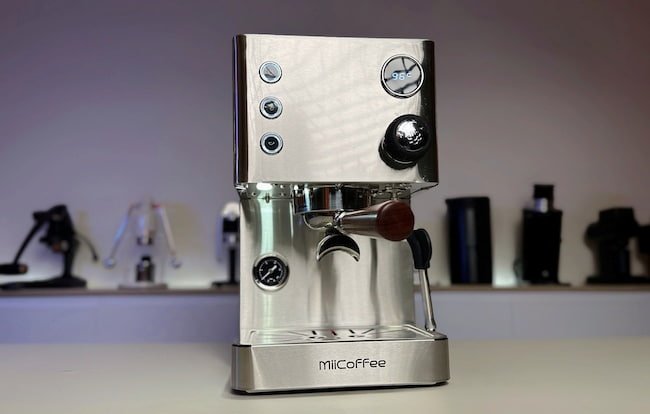The MiiCoffee Apex is not just another entry in the budget espresso machine market; in my opinion, it represents a leap forward in a field that’s been somewhat stagnant.
Its features are surprisingly advanced for its price range, and it might just set a new standard for what we can expect from affordable home espresso makers.
However, it’s not without its drawbacks (in fact, there are two notable ones), which I’ll delve into shortly.
MiiCoffee Apex: The “DF ” of Espresso Makers?
At first glance, the MiiCoffee Apex might seem like your typical espresso machine. However, I believe it’s a far more intriguing device that warrants closer examination.
This espresso machine exudes an aura reminding me of the DF grinders. For the uninitiated, “DF” refers to a range of grinders known for:
- Bringing High-End Features to a Budget Level: Previously exclusive features became accessible at a budget-friendly price, democratizing the espresso experience.
- Global Branding: These grinders were sold worldwide under various names, exemplifying white label or OEM production. Interestingly, in some cases, these white-label products even surpassed the popularity of the original brands.
- Continuous Improvement (and weird design decisions): The DF grinders underwent numerous incremental updates to remedy initial shortcomings, leading to multiple versions and generations. Depending on whether you’re a glass half full or half empty type of person this can be interpreted in different ways.
I think it’s pretty clear that the Apex Espresso Machine is following in the same footsteps: This device offers incredible value. It features adjustable PID temperature control, adjustable preinfusion, a 58 mm industry-standard portafilter, a separate 550 ml stainless steel boiler for brewing, and a thermoblock for steaming.
Remarkably, it’s priced competitively against entry-level favorites like the Gaggia Classic and Breville Bambino Plus, and undercutting the Rancilio Silvia by a wide margin.
If you just look at the features, however, on paper it’s somewhere between the Profitec Go and Quick Mill Silvano.
Check out my YouTube review here 👇
Global Presence: The Apex, which was provided by MiiCoffee for this review, is similarly to the DF-grinders known under various names around the globe.
In the US, both MiiCoffee and Espresso Outlet has it (under the respective names, Apex and Legato), in Hungary it’s called AVX DB1, and variations known as Gemilai and iTop can be found in China. In the Philippines, it goes by Koryaiko.
If you’re familar with the Kafmasino project, it also appears to be the same machine (however, this device is decked out with a tablet and some different internals).
Overview & Design
The Apex espresso machine stands out from others due to its clear display, which makes adjusting settings and general usage a lot easier compared to most machines. The display comes in handy when you need to tweak the temperature, making the process much more convenient.
The display will also inform you when the machine is in “eco-mode”. Just click a button, and then the boiler will rapidly heat up again.
However, in general, the machine has a relatively fast heat-up time of around 7-10 minutes, so there’s not any good reasons to leave it on all day.
The machine’s size is somewhere between the Gaggia Classic and Rancilio Silvia:
- Gaggia Classic weighs in at 7 kg
- Rancilio Silvia is a lot more chunky at 14 kg
- MiiCoffee Apex is exactly in-between at 10.4 kg
Looks-wise, the Apex resembles the typical entry-level espresso maker. I’ve always had a fondness for the Gaggia Classic’s design, while I find Miss Silvia’s appearance more utilitarian and boxy.
The Apex might not be a contender for design awards, but its looks are acceptable, although I could wish for a bit more flair when it comes to the button icons.
There is also a prominent MiiCoffee logo on the drip tray which detracts from the overall appearance. I don’t mind logos if they are made by Italian designers and have at least half a century of history, but if that’s the case, then less is more.
Overall, I’d say the aesthetics are about the same as comparative espresso makers like Victoria and Glenda from the Lelit brand.
Functional accessories
It comes with quality accessories including a sturdy tamper, cleaning brush, a surprisingly good single basket (a rarity), and a premium portafilter.
The portafilter that comes with the Rancilio Silvia might still have an edge, but Apex’ version is definitely nicer than what comes with the Gaggia Classic and Breville Bambino Plus. The metal is heavy and nicely finished. The handle does feel a bit cheap, but it takes about 20 seconds to install a new one if you should wish to do so.
The water tank is adequately sized and detachable. The drip tray, though slightly crude looking, includes a handy float indicator and a LED light for visibility.
An awesome additional feature is the timer, which activates during brewing or steaming. Some prosumer machines have this feature as well, but not necessarily executed to the same standard. For instance, the display on the Breville Dual Boiler is much harder to read. And unlike the Apex, it only works for brewing, not steaming.
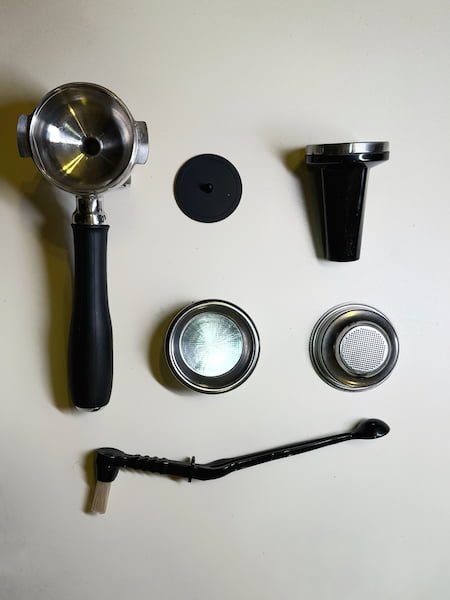
Espresso Brewing
The Apex excels in temperature stability thanks to its dedicated single boiler for brewing. The built-in PID allows for temperature adjustments, enhancing shot consistency.
PID is a game-changer when it comes to making espresso at home. Without it, consistency can be really challenging. If you have one of those two classic single-boiler espresso machines I mentioned before, such as Silvia or Classic, you know how difficult it it it can be to achieve consistent results.
Many users of these machines end up investing time and money in installing a PID to replace the less precise thermostat that these devices come with.
Even on machines that should be prosumer level, such as Rocket Appartamento, a PID is conspicuously absent.
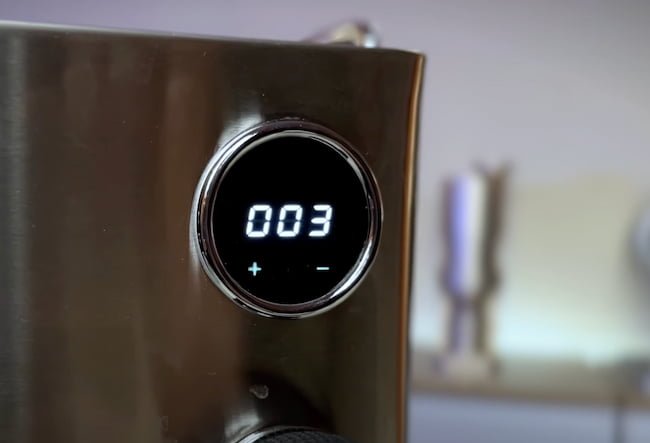
A thermostat will oscillate between vastly different temperatures, so you need a so-called “temperature surfing” routine to brew at the right temperature. This routine usually involves purging a lot of hot water and waiting for a preset number of seconds. Temperature surfing might sound fun and adventurous, but it quickly becomes a chore.
Another reason temperature surfing is frustrating on single boiler machines is that the same boiler has to exceed boiling temperature to produce steam. This means a lot of waiting for the boiler to heat. And after its heated you need to manage that steam if you want to brew again. Often involving brewing and steaming simultaneously to expel hot water and allow new, cold water into the boiler. This process is both wasteful and time-consuming.
The PID on the Apex might not be 100% precise, but it’s sufficient for everyday use. During my testing period, I never experienced shots that felt too cold or too hot. I was able to manage the temperature with confidence; increasing it for lighter roasts and lowering it for dark roasts.
Adjusting the temperature on the display is straightforward, and you can follow the boiler in real time as it recovers after brewing. The PID is connected to the boiler, so it won’t show your brew temperature, but you can overshoot a few degrees and that should land you in a good spot. However, this also depends on how well you preheat your machine and portafilter.
I think the PID has a tendency to indicate temperatures are reached a little too fast. It’s probably wise to err on the side of caution, allowing extra minutes for warm-up or to change to a new temperature if you’re adjusting it prior to brewing.
If I set the PID to 102 Celsius, it will indicate that it’s at that temperature 1-2 minutes before it actually is. You can easily test this; at a 102-degree setting, you’d expect some steaming and hissing sounds from the group head when pressing the brew button.
Adjustable Preinfusion
The next feature worth discussing is the adjustable preinfusion. Initially, I was quite excited about this addition, but its practicality in everyday use falls short of expectations, veering into the territory of early DF models.
The preinfusion is tied exclusively to the preprogrammed shot button. This means using the manual button results in a shot at full pressure. However, this isn’t a significant issue since the timer button can be stopped prematurely if needed.
To activate preinfusion, you hold down the minus button until the option appears and then select the duration. Initially, this seems promising. However, in practice, the preinfusion only engages the pump for a brief second, followed by a period where nothing happens. The amount of water dispensed is minimal, roughly 5-10 ml, which is insufficient to saturate more than the top layer of the coffee. In my opinion, this form of preinfusion is not just ineffective; it’s potentially detrimental.
I discussed this issue with Miicoffee to verify if it was a problem specific to my unit, but they noted the same behavior. There are plans in motion to approach the factory to develop a potential improvement. Extending the duration of the preinfusion by a few seconds could make a significant difference, allowing for full puck saturation.
As it stands, I would advise against using the preinfusion feature of this device, as it’s more likely to hinder than help. We can hope for an enhanced preinfusion capability in future iterations of this machine.
15 bar pump pressure?
Currently, one of the main challenges with the Apex is that it has an Ulka pump operating at 15 bars of pressure.
In the specialty coffee world, 9 bars has long been the gold standard. However, on more affordable machines, you often find 15-bar pumps. This is because many manufacturers opt for higher pressure to accommodate E.S.E. pods or pressurized baskets.
The 9-bar standard has almost achieved a mythological status, so it’s understandable if potential buyers of the Apex are concerned about its 15-bar pump.
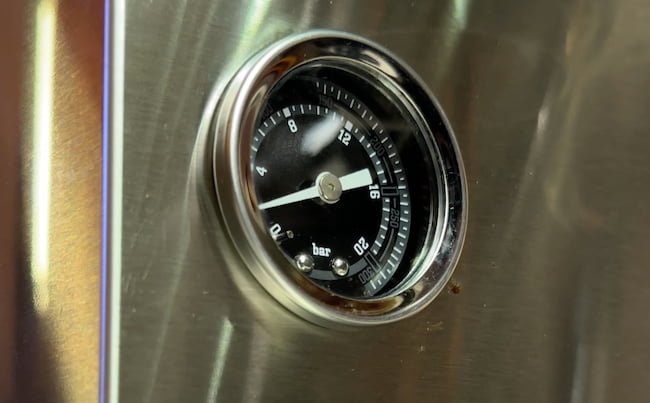
However, the rigid adherence to 9 bars has been questioned in recent years. Some baristas now advocate for brewing at 6 bars for better shot-to-shot consistency. Lower pressure allows for a coarser grind, improving consistency and reducing the risk of channeling, according to new coffee science.
Conversely, Matt Perger of Barista Hustle suggests a different approach, claiming that up to 12 bars is ideal, assuming you avoid channeling or choking and use effective puck preparation and distribution techniques, such as the Weiss Distribution Technique (WDT).
So what’s the ideal pressure? The truth is that it’s not as black and white as it may seem at first glance.
Another factor many overlook is that the pump doesn’t necessarily exert maximum pressure. It has to encounter resistance first. So yes, with a blind basket for cleaning, the pressure will hit 15 bars, but with a standard espresso grind, the pressure will probably be lower.
In my experience, my shots typically peak at 11-12 bars, then gradually decrease, as the soluble material in the puck gets washed into the cup, and there’s less material in the portafilter to crate resistance.
Unlike the Gaggia Classic Pro, which has a hackable Over-Pressure Valve (OPV) to adjust maximum pressure, the Apex does not offer this feature. However, you can modify the water debit by adjusting a screw inside the machine. This adjustment affects the flow rate, which I’ve found can help control pump pressure. The machine is preset to a standard flow of 400 ml, but reducing this slightly allows for a gentler build-up to maximum pressure and reduces the likelihood of channeling as the coffee puck degrades.
Steaming Performance:
The 360-degree, fully articulating steam wand isn’t the quickest nor the slowest in the market, since it relies on a thermoblock for steam power. Nevertheless, it’s consistent, delivering the same steam quality and power every time, which is just as important if you ask me.
A notable advantage over machines like the Gaggia Classic Pro is that the Apex maintains steady steam power throughout use. Also, there’s no waiting for the machine to reheat when switching from brewing to steaming.
Compared to devices with two boilers, the performance of the thermoblock is less powerful. However, it should work adequately unless you’re steaming huge quantities simultaneously. I usually only steam around 120-150 ml of milk in one go, and this is no problem with the Apex; you can get finely textured microfoam in about 20-23 seconds.
A neat feature of the Apex is the display timer for steaming, ensuring consistent results – I’ve found it takes exactly 20 seconds to heat enough oat milk for a small cappuccino.
As someone who isn’t overly particular about steaming, I find the Apex’s performance good enough, while some latte artists might prefer more powerful machines.
However, Miicoffee informed me that they plan to include a single-hole steam tip in future models, which should further enhance the pressure.
A useful tip: there’s often a bit of initial water, so it’s best to purge the wand for about three seconds before starting to steam.

Build quality?
One common concern with new manufacturers, particularly those producing complex products like espresso makers, centers on longevity.
Of course, there will be uncertainty surrounding the durability of this particular machine, given a relatively unknown Chinese factory manufactures it.
However, it’s worth noting that the machine’s previous iteration—sans the pressure gauge—has been on the market in select regions for several years. In Korea, for instance, it has garnered a fair reputation.
Moreover, following my YouTube video release, I received feedback from the Hungarian distributor AVX. They regard this machine as equally, if not more, stable compared to some established Italian espresso brands.
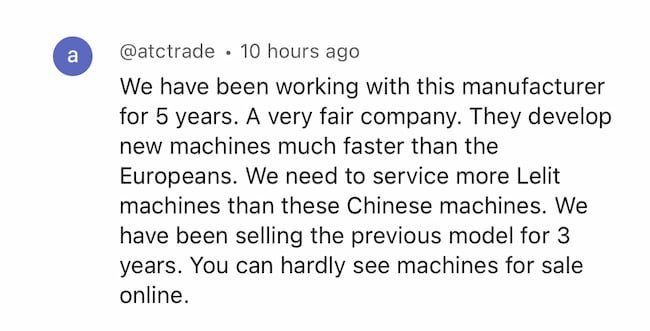
Alternatives
- Gaggia Classic and Rancilio Silvia: These two classic Italian espresso makers have seen little change since their debut decades ago. Their single boiler, dual-purpose design can be incredibly frustrating. Having used both these machines and the Apex, I can confidently say the Apex pulls better shots more consistently.
The Silvia does have an advantage with its powerful steam capability, but this comes with a compromise. You’ll need to wait a minute between brewing and steaming, or steam first, then purge hot water to lower the temperature before pulling your shot. Personally, I prefer the slightly weaker steam power of the Apex to avoid this routine.
- Breville Bambino Plus: Unlike the single-boiler designs, the Bambino Plus features a thermocoil heating system and a non-adjustable PID.
For espresso purists, the 58 mm portafilter platform and adjustable brew temperature give the Apex an edge.
However, the Bambino Plus has some notable advantages. It boasts automatic steam frothing – a convenient feature. Additionally, its manual milk steam power seems slightly stronger than the Apex’s.
Lastly, the Bambino Plus impresses with its ultra-rapid 3-second heat-up time and compact footprint. If flexibility and milk-based drinks are your priorities, there are compelling reasons to choose the Bambino Plus. But for those more inclined towards traditional espresso and seeking a “somewhat” classic machine, the Apex might be the better choice.
The Verdict
The MiiCoffee Apex, despite a few quirks, simply stands out among other budget-friendly espresso makers.
It eliminates the need for temperature surfing and purging – two of the most tedious aspects of the home barista lifestyle that espresso lovers on a budget have endured for decades.
Additionally, it boasts features uncommon in its price range. Beyond the PID and dedicated thermoblock for steaming, it offers a shot timer and an LED light for the drip tray – luxuries typically reserved for prosumer models.
The downside is the high pressure and the wonky preinfusion function. But in my world, this tradeoff is one I’m more than happy to make for the PID and dedicated brew boiler.
As someone who usually relies on a dual boiler machine for my daily espresso and cappuccino needs, I didn’t notice much difference in performance during my testing period with the Apex. Slightly weaker steam, perhaps, but besides that the performance is similar.
Whether upgrading or purchasing your first espresso machine, the MiiCoffee Apex is likely one of the best options currently available.
Buy here:
